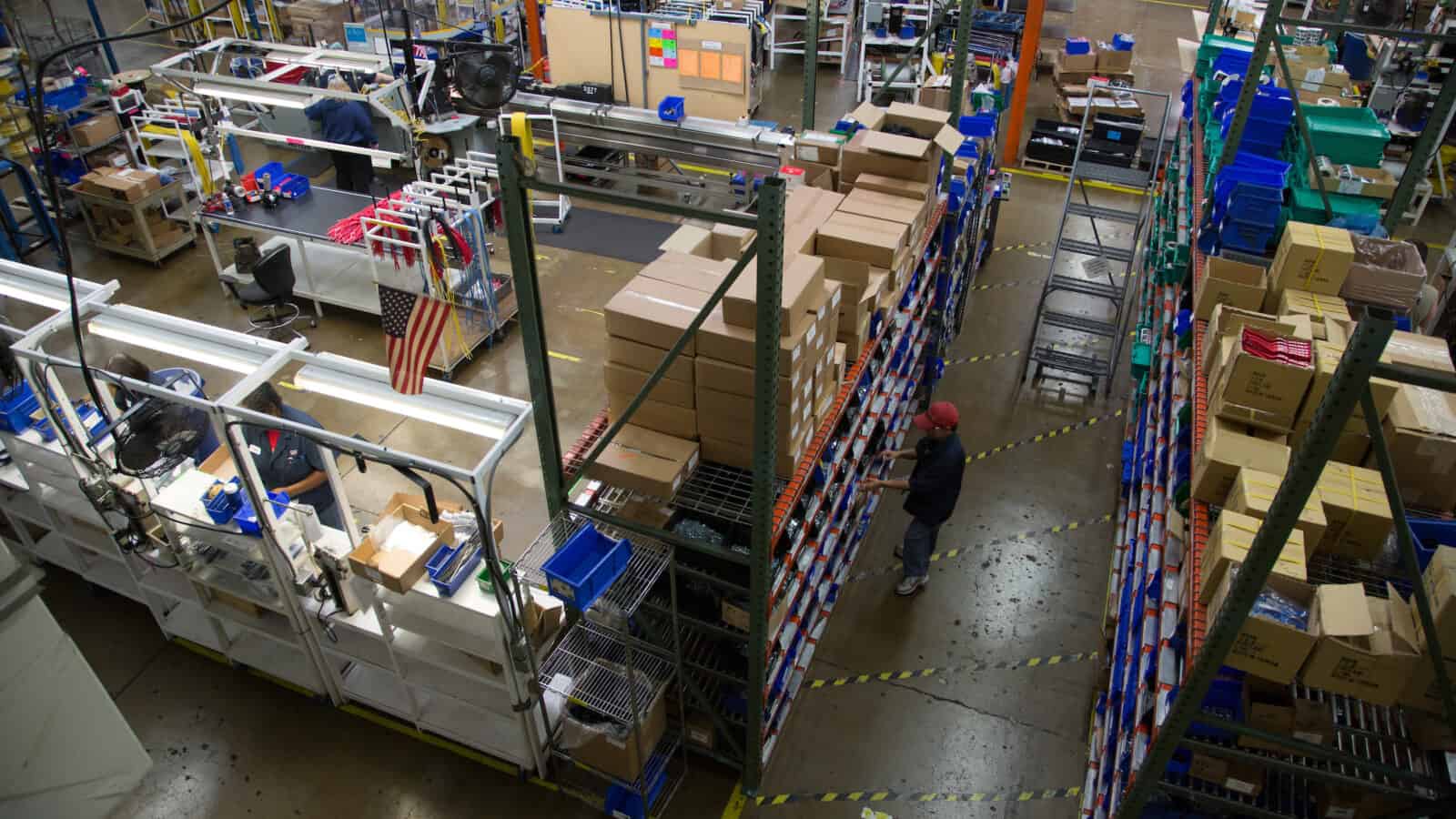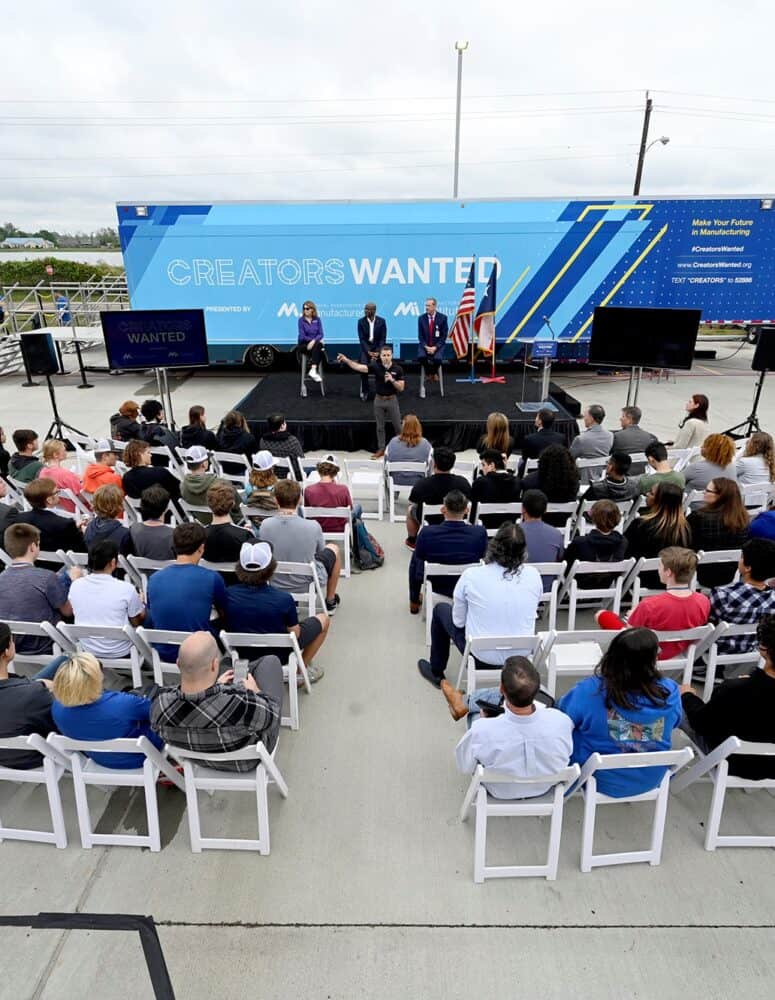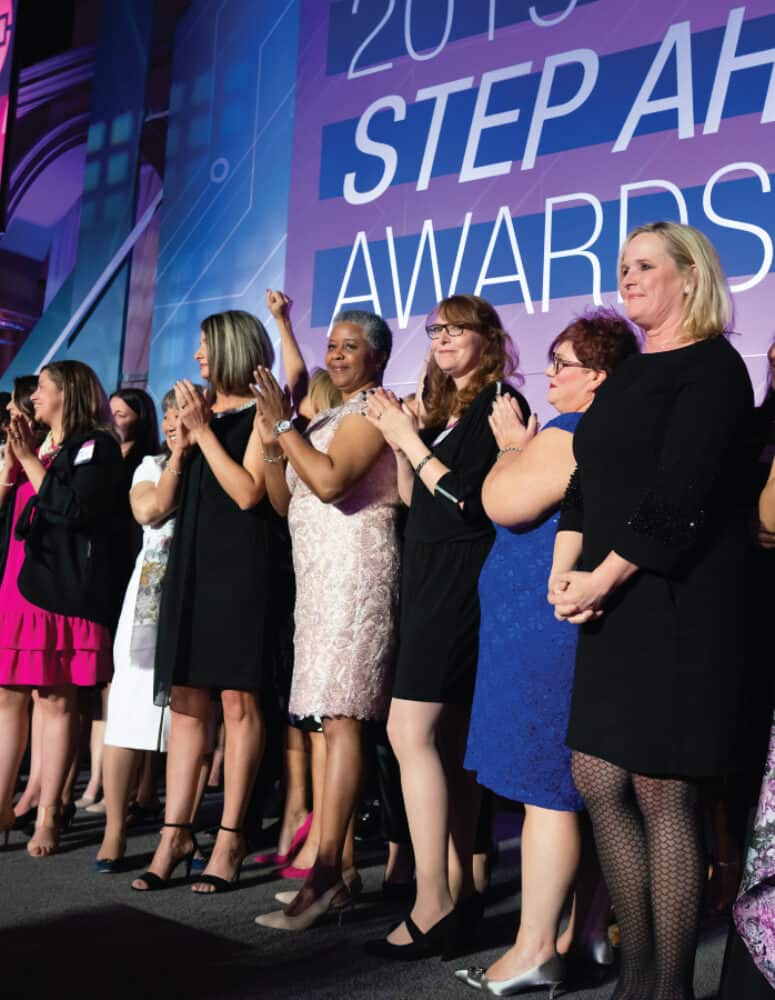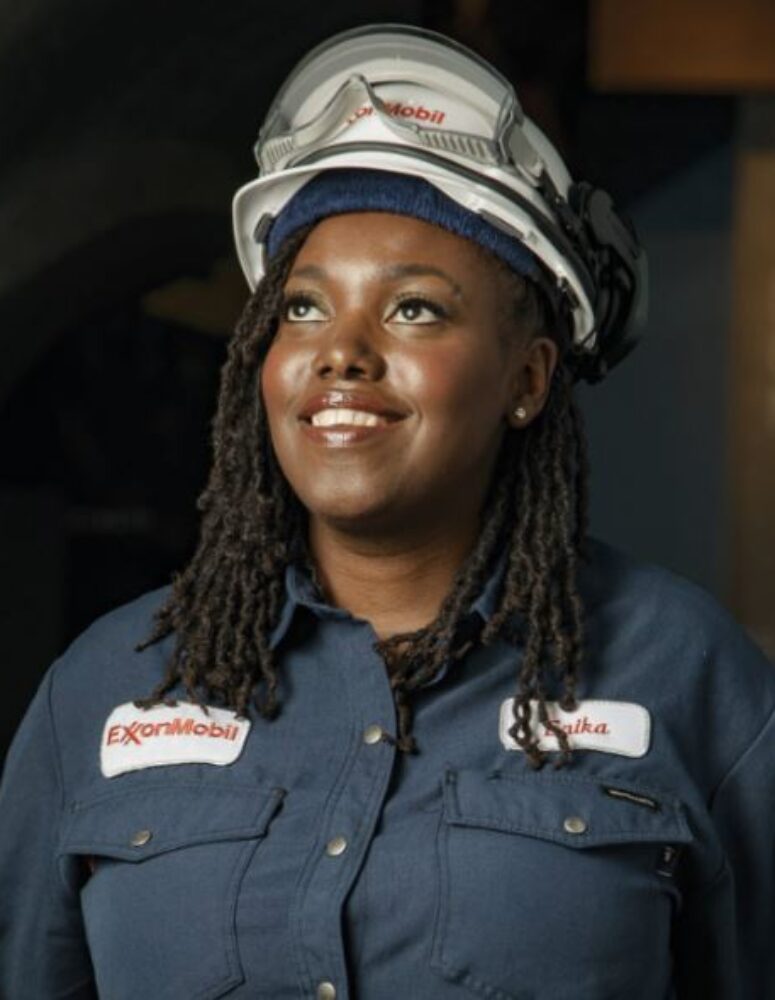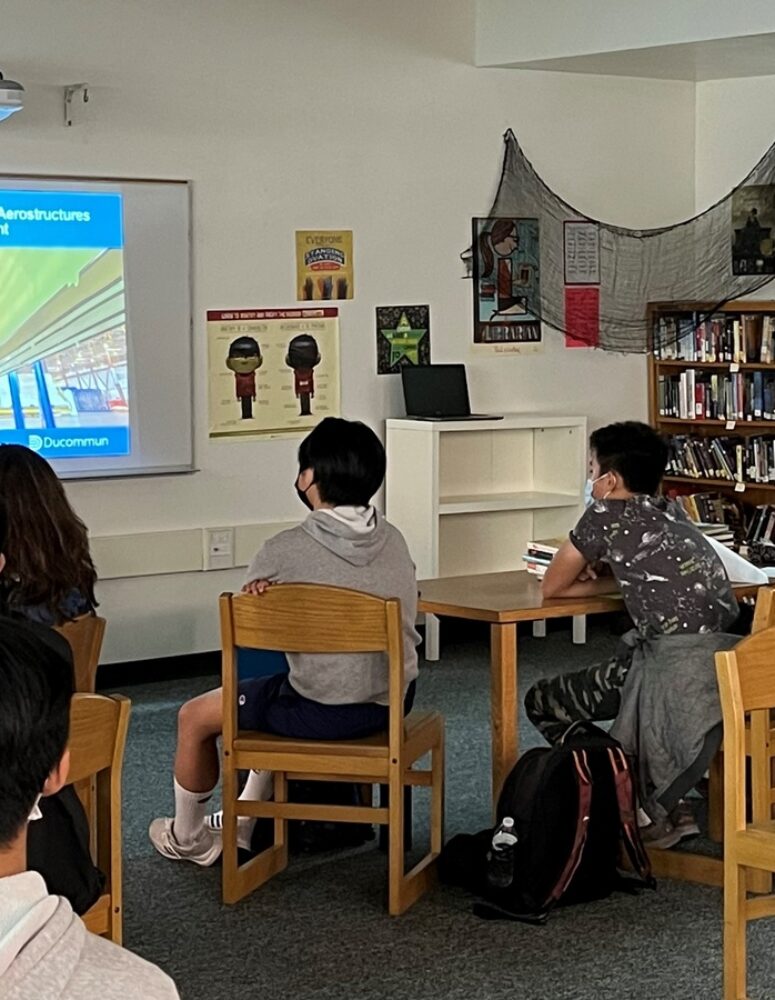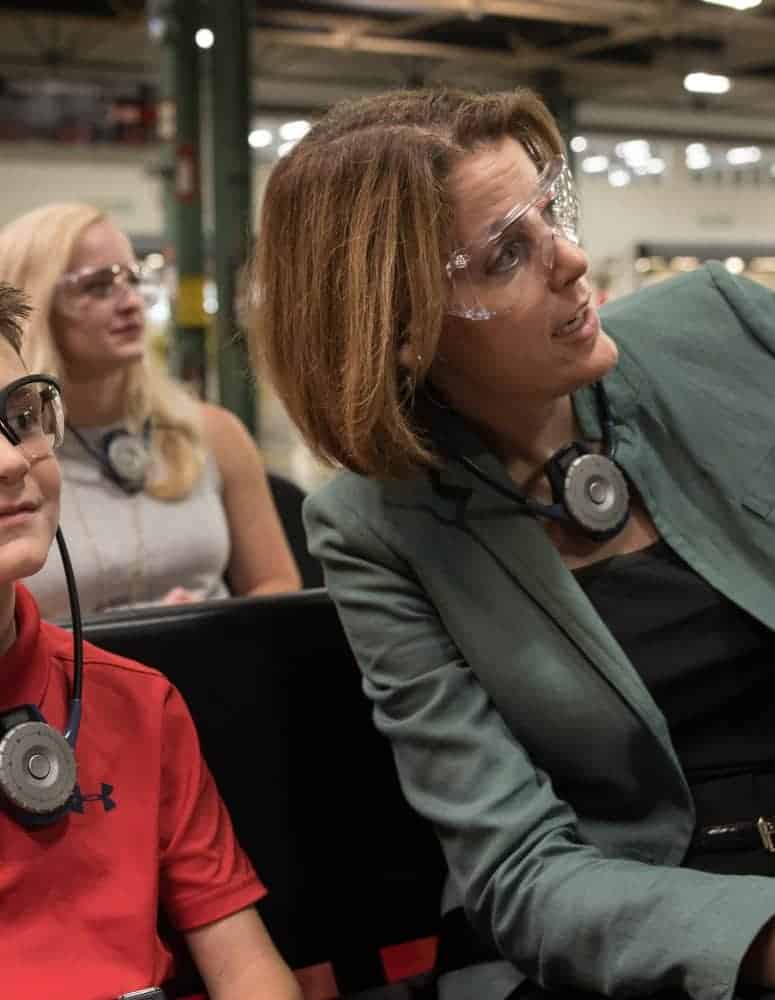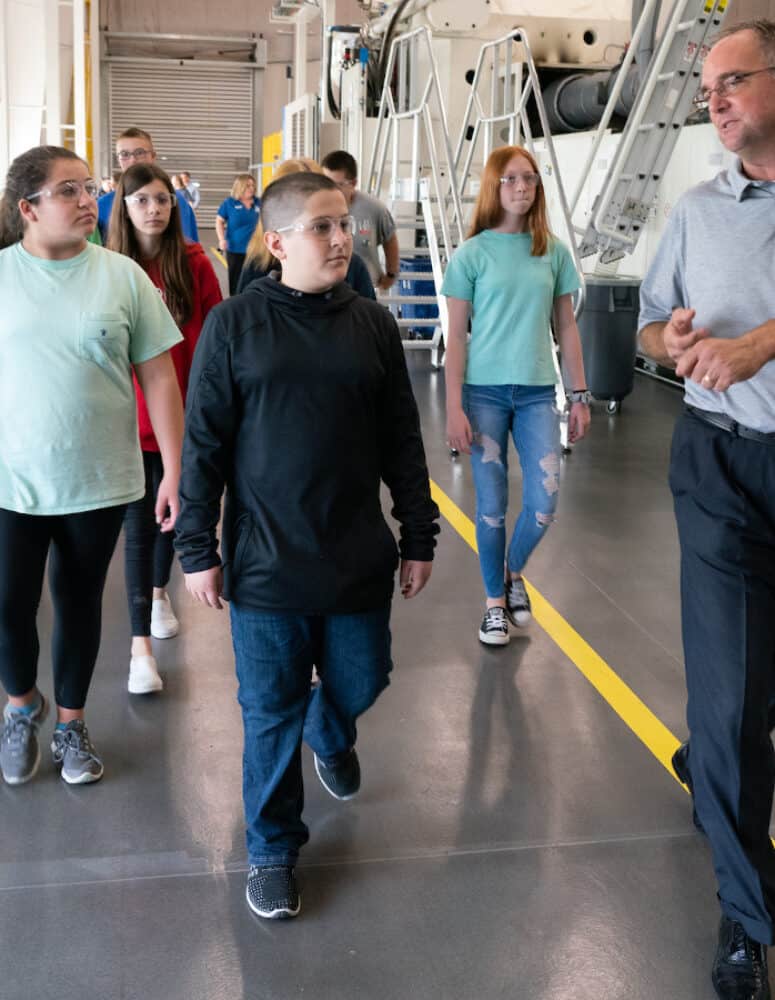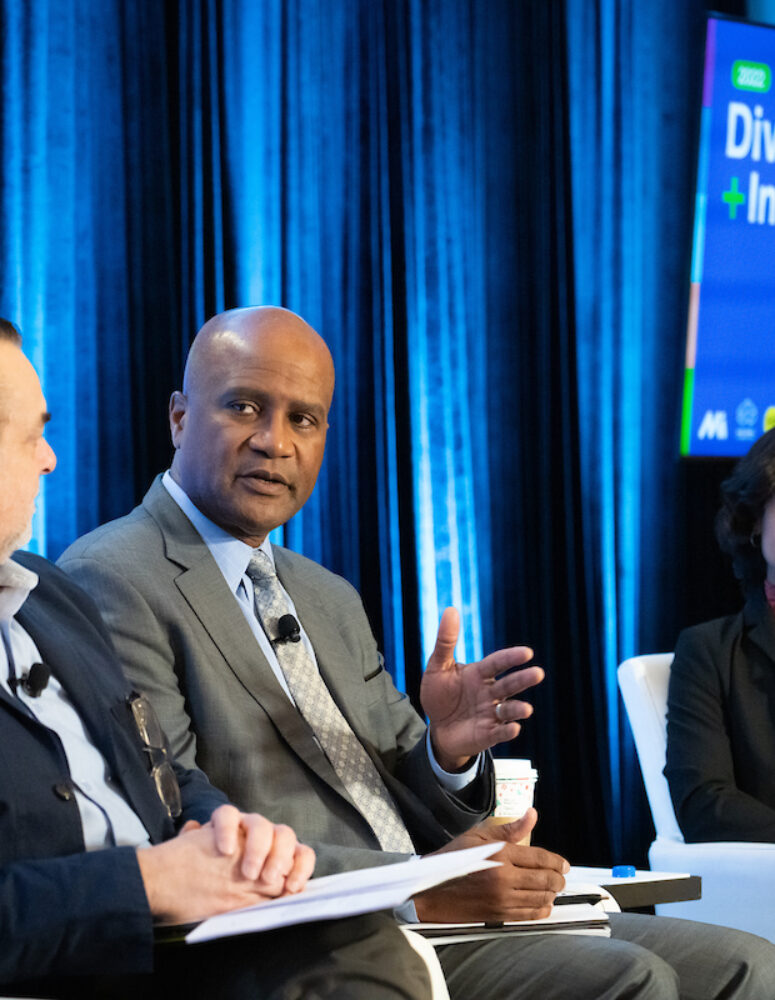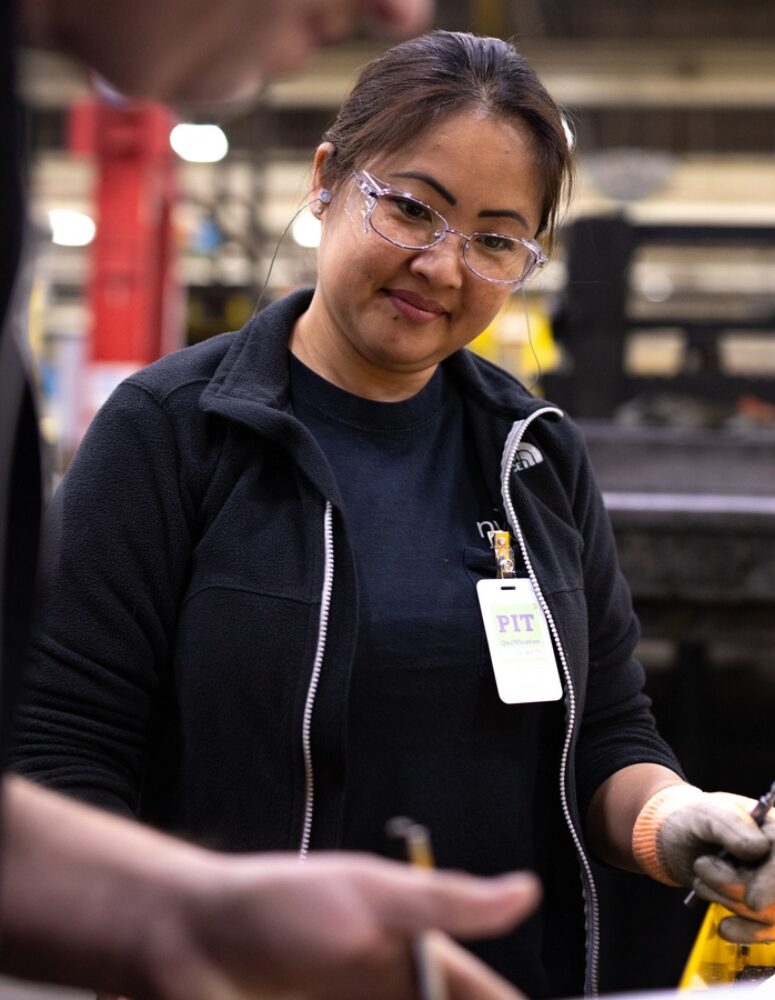How Manufacturers Can Tap into a Large, Talented Workforce
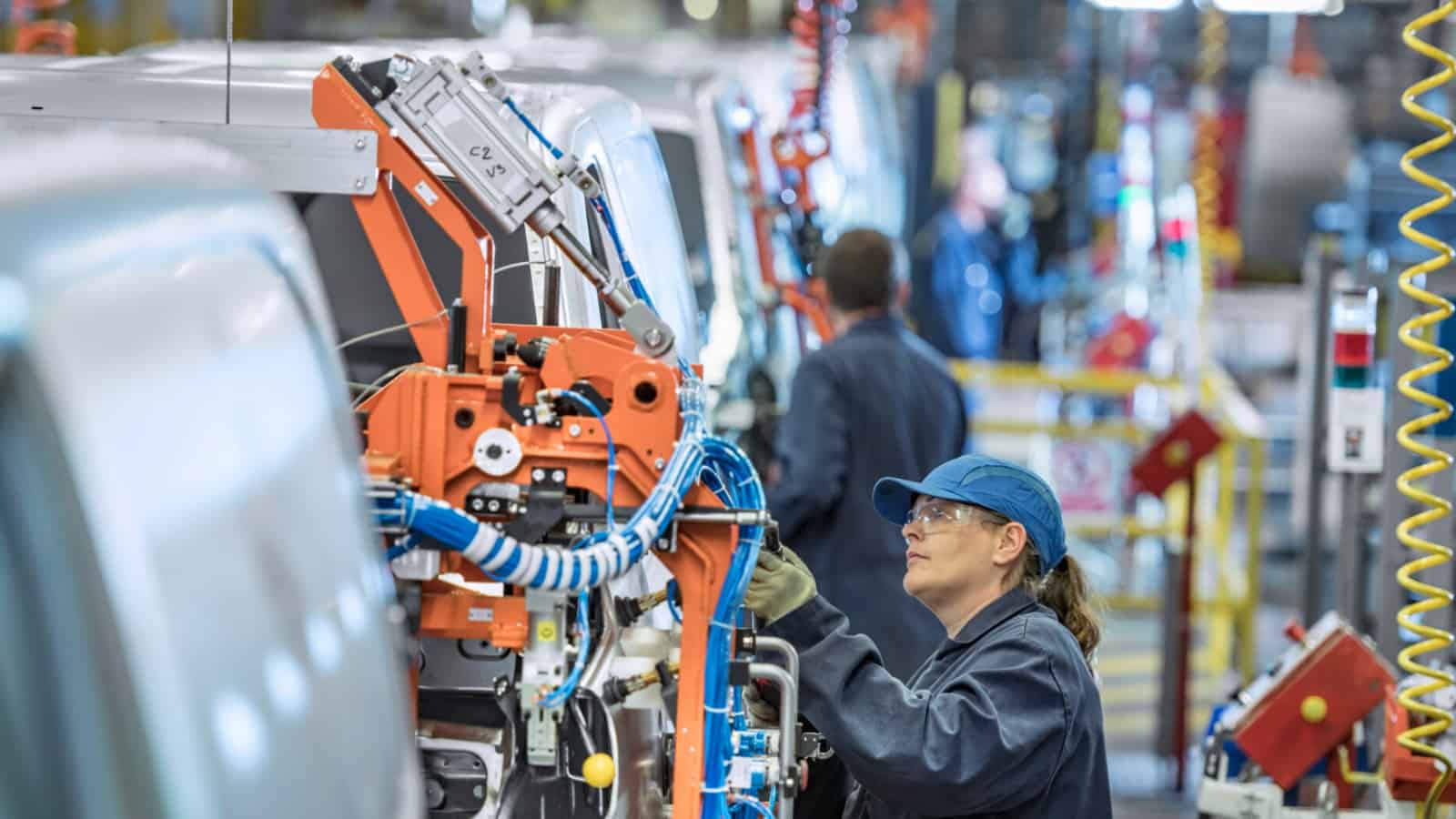
Discipline, reliability, a team-player mindset, leadership—manufacturers are looking for all these qualities in the talent they recruit. What if companies could tap into a population not only equipped with these skills but experienced in using them in high-stakes situations?
Well, the Manufacturing Institute—the workforce development and education affiliate of the NAM—has good news, if you haven’t heard it already: this population exists, and it’s military talent. Transitioning service members, veterans, National Guard members, reservists and military spouses have a wealth of skills and experience that translate easily into a manufacturing context.
So how can manufacturers reach these workers and make the best use of them? The MI recently convened both military and manufacturing leaders in Fayetteville, North Carolina, for its third Workforce Solution Series event, where they answered this question and offered a range of useful advice. Here are some of the highlights.
Generally speaking: Major General Eugene J. LeBoeuf, Deputy Commanding General, U.S. Army Reserve Command, highlighted the talents and skillsets that Army reservists can offer the manufacturing industry, including agility, a can-do attitude and a thorough grounding in engineering, logistics and mechatronics.
- With nearly 190,000 soldiers, the Army Reserve comprises much of the readiness force of the U.S. Army. Many of these reservists are underemployed or unemployed, which means they represent an opportunity for manufacturers.
- Manufacturers interested in hiring from this labor pool can partner with the Private Public Partnership Office, which connects companies with reservists at no cost.
Reaching military talent: Several panelists emphasized the importance of developing recruitment processes that encourage military talent to apply and interview for manufacturing jobs.
- “Make sure that the requirements you’re listing in your position descriptions are actually required. Do you really need someone to have a master’s degree to get the job done?” asked Rob Patton, vice president of Fayetteville Cumberland Economic Development Corporation.
- As a recently transitioned service member, James Goppert, HR business partner at WestRock, explained some of the challenges that military talent may face when entering the workforce. “Having to explain military skills and certifications to a civilian in an interview was strange. It would have been helpful to have someone on the other side who understood my experiences.”
Open to all possibilities: Jennifer Goodman, senior manager of talent initiatives at Coca-Cola Consolidated, drew on her experiences as a military spouse. “Military spouses are 92% women and have a 22% unemployment rate. That’s a huge labor pool that’s going underemployed or unemployed.”
- While relocation is often a concern for companies, Goodman points out that it does not have to be a disadvantage. “Think of manufacturers who have locations across the country. Maybe you can start a military spouse at one location and then move them to another. Or, if they’ve proven themselves after a few years, you could transition them to remote work.”
- “The benefits don’t stop with the one military spouse you hire,” she added. “We’re a very loyal community with great word of mouth and a larger referral network.”
The last word: “Don’t underestimate the value of an event like this Solution Series can have. You can take the information, energy and passion that you get from meeting with people who have the same goal of building a stronger economy and use it to power you forward,” said Nathan Huret, economic development director for Catawba County.
Learn more: To get started—or continue—with hiring military talent, check out the extensive resources of the MI’s Heroes MAKE America initiative, which prepares prospective military workers for new and rewarding careers in manufacturing.
STEP Ahead Awards Honor Women in Manufacturing
Get the Latest News
Get involved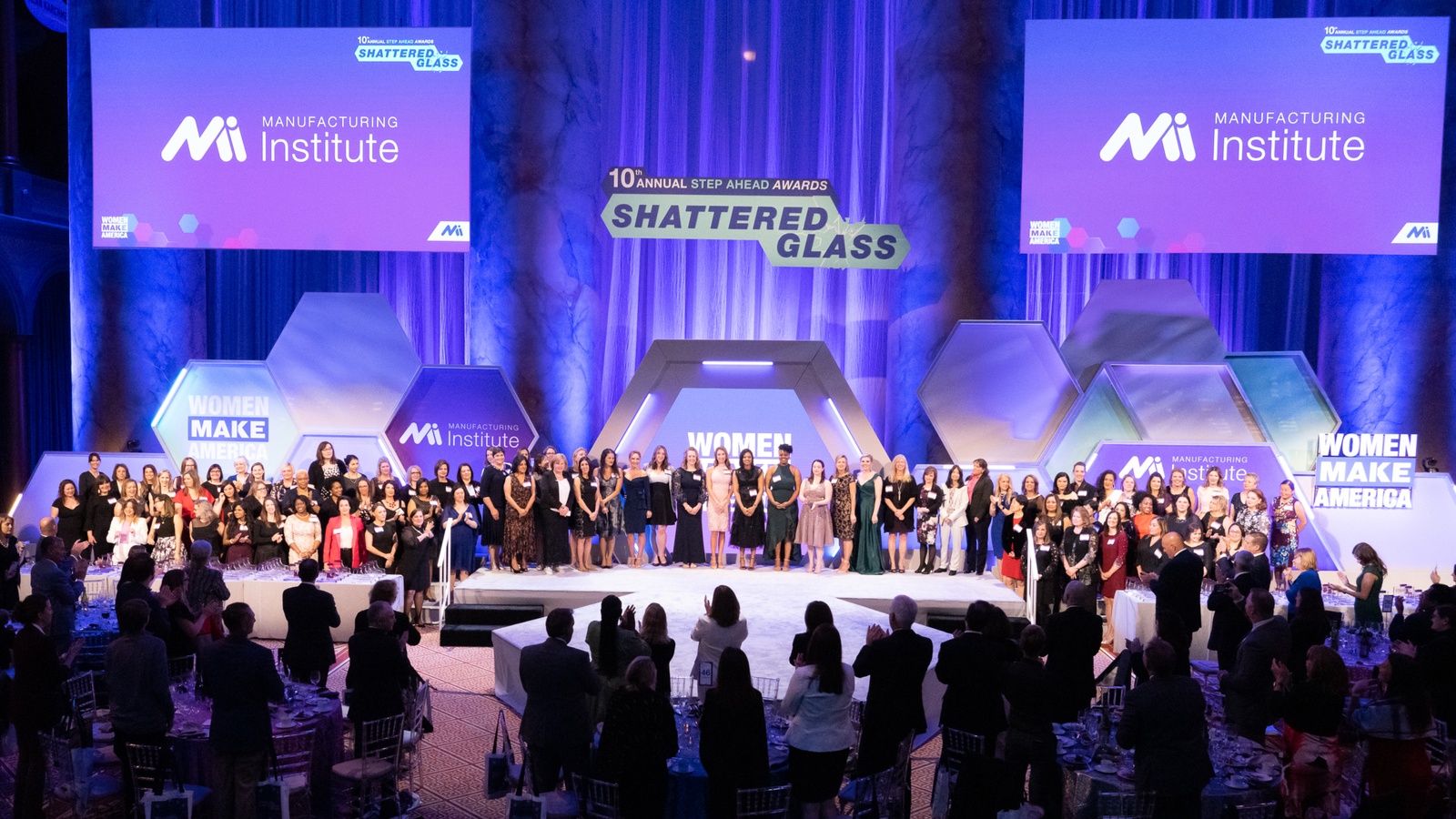
The Manufacturing Institute’s 10th annual STEP Ahead Awards took place in Washington, D.C., last week, honoring some of the most impressive and inspiring women in the manufacturing industry today. The Awards are part of the STEP Ahead program, which is designed to help advance women’s achievements in the fields of science, technology, engineering and production.
- The event highlighted the 2022 STEP Ahead Honorees (100 women who are leaders in manufacturing) and the 2022 STEP Ahead Emerging Leaders (30 women under 30 years old who have already had a significant impact on the industry).
The awards ceremony took place on Thursday night, with hundreds of guests in attendance at the National Building Museum and hundreds more viewing the ceremony online. The program featured:
- 2022 STEP Chair and former 3M Senior Vice President Denise Rutherford;
- 2022 STEP Vice Chair and Cornerstone Building Brands President and CEO Rose Lee;
- MI President Carolyn Lee;
- MI Vice President of Strategic Engagement and Inclusion AJ Jorgenson; and
- NAM President and CEO and MI Board Chair Jay Timmons.
Sponsors included an all-star roster of manufacturers, including Arconic Foundation, BASF Corporation, Cornerstone Building Brands, PTC, Trane Technologies, ABB, Molson Coors, Novelis, Rockwell Automation, SABIC, Sherwin-Williams and Toyota.
What they said: Carolyn Lee lauded the Honorees and spoke about the importance of closing the skills gap by bringing more women into the manufacturing industry.
- “My hope is that 10 years down the line, when we meet here for the 20th anniversary of these awards, the young women we will honor won’t have even heard of the glass ceiling, because it’ll be ancient history,” said Lee.
- “And that will be thanks to the support system, the mentorship and the sterling examples set by the women in this room and the support from our allies.”
Rutherford spoke about leaders’ opportunities to work together to make important progress.
- “Throughout my career, I’ve learned that being a great leader, as an individual or as a company, means that we don’t go it alone,” said Rutherford. “True change only happens when we work together as trusted allies, advocates and sponsors.”
Rose Lee laid out the qualities that all the Honorees showed and highlighted their shared successes.
- “The STEP Ahead Awards recognize women in science, technology, engineering and production who exemplify leadership within their companies and within their communities,” said Lee. “Tonight is their night to celebrate their accomplishments.”
Timmons praised the STEP Honorees and called on allies to continue supporting women in the manufacturing industry.
- “Your achievements, your success and your dedication are showing women what’s possible in manufacturing,” he said. “If you can see it, you know you can be it.”
35×30: Carolyn Lee and Jorgenson spoke about the 35×30 initiative—a program designed to close the skills and talent gap in manufacturing by adding half a million women workers to the industry, increasing women’s representation in manufacturing from 29% today to 35% by 2030.
- The campaign will train more than 1,000 women mentors, build new tools and resources and work with manufacturing leaders to deploy proven strategies to attract and retain female talent.
- It will also support young women throughout their education by offering best-in-class leadership development programming and creating a STEP alumnae-funded scholarship.
- “Tonight, we are done with waiting for other leaders to ‘change things,’ to make society better, more equitable,” said Jorgenson. “We are the leaders. So, tonight, we ask you to join us, to lead.”
New commitments: To help this new initiative along its way, Arconic Foundation President Ryan Kish and Ketchie CEO Courtney Silver stood up during the ceremony to pledge new financial commitments to the program.
The last word: The gala featured a stellar musical performance by award-winning singer–songwriter Rachel Platten, which left not a dry eye in the house. Inspired by the women of STEP, she surprised the audience by singing a new song she’d written for her daughters. It captures what the women leaders of today want to tell the girls who will someday be their heirs:
Girls, you were born to run. To reach the stars and chase the sun.
Girls, you’re wild and free. The wind is at your back, the world is at your feet.
Labor Market by the Numbers – July 2023
The big number: 74.4% of respondents in the Q2 NAM Manufacturers’ Outlook Survey cited the inability to attract and retain workers as their primary business concern, even amid signs of a cooling labor market. This is the third consecutive quarter in which this concern appeared at the top of respondents’ list.
- In the previous survey, more than 59% of manufacturers said that not having enough employees would impact their ability to make investments or expand.
Manufacturing: Manufacturing employment rose by 7,000 in June, continuing to seesaw from month to month over the year to date.
- The sector added just 15,000 workers during the first six months of 2023, slowing materially after adding a robust 385,000 and 390,000 employees in 2021 and 2022, respectively.
- More positively, there were 12,989,000 manufacturing employees in June, just shy of February’s total of 12,988,000, which was the most since November 2008.
Nonfarm payrolls: Nonfarm payroll employment rose by 209,000 in June, slowing from 306,000 in April but still a good figure. The U.S. economy has added 1,669,000 workers through the first half of 2023, a robust pace.
- The unemployment rate edged down from 3.7% in May to 3.6% in June, as the economy remains at or near “full employment.”
- The number of employed workers increased from 160,721,000 in May to 160,994,000 in June, which was not far from April’s record level (161,031,000). Those who were unemployed declined from 6,097,000 to 5,957,000.
- The labor force participation rate remained at 62.6% for the fourth straight month, the best rate since March 2020.
Job openings: There were 604,000 manufacturing job openings in May, down from 668,000 in April and the lowest level since February 2021. Even with the overall labor market remaining solid, the number of job postings in the sector continues to cool notably, as expected.
- Total quits in the manufacturing sector rose to 293,000 in May, an 11-month high. In addition, total quits in the overall economy increased to 4.015,000, the most since December.
- With that said, layoffs in the manufacturing sector have also risen, up to 139,000 in May, the highest level since July 2020.
- Meanwhile, nonfarm business job openings declined from 10,320,000 in April to 9,824,000 in May, a solid reading. In May, there were 62.1 unemployed workers for every 100 job openings in the U.S. economy.
Wages: The average hourly earnings of production and nonsupervisory workers in manufacturing jumped 1.0% to $26.41 in June, with 5.6% growth over the past 12 months, up from 4.7% in May.
➔ Key takeaway: Manufacturers continue to cite an inability to attract and retain workers as their top challenge. While there are signs that the labor market is cooling, both for manufacturers and the macroeconomy, employment remains not far from a 15-year high while wage growth continues to increase very solidly.
On the Job Market: Current Trends – July 2023
Which manufacturing sectors experienced the most growth in job openings over the past year? We used Lightcast™ to dive into the 789,969 unique job postings for the past 12 months (May 2022 to May 2023) and organized by North American Industrial Classification (NAICS) codes. In this case, we are better able to understand what sectors are experiencing the most growth. As a reminder, the data get more granular with increased digits.
The top manufacturing sectors over the past 12 months at the 3-digit NAICS level, ordered by the number of unique postings, were:
- Computer and Electronic Products (NAICS 334) – 103,507 unique postings
- Transportation Equipment (NAICS 336) – 93,075
- Food Manufacturing (NAICS 311) – 78,397
- Machinery (NAICS 333)– 74,193
- Chemicals (NAICS 325) – 72,254
The top manufacturing sectors over the past 12 months at the 4-digit NAICS level, ordered by the number of unique postings:
- Navigational, Measuring, Electromedical, and Control Instruments Manufacturing (NAICS 3345) – 66,411 unique postings
- Beverage Manufacturing (NAICS 3121) – 54,837
- Aerospace Products and Parts (NAICS 3364) – 40,541
- Pharmaceuticals and Medicines (NAICS 3254) – 27,442
- Motor Vehicle Manufacturing (NAICS 3361) – 25,006
➔ The takeaway: Though growth in manufacturing has been broad-based, many of the sectors leading job creation over the past year require advanced skills and yield high salaries. Looking at only the top five 4-digit NAICS manufacturing sectors list above, the median advertised salaries for those five sectors over the past 12 months was $36.12 per hour.
* Lightcast™ data accessed on June 16, 2023.
What We’re Reading – July 2023
Speaking of the importance of flexibility, a Harvard Business Review survey of 5,700 onsite US workers in industries like manufacturing, transportation and health care found a mismatch between the flexibility options that companies provide and what employees actually want.
What companies are offering: The most common flexibility options that onsite workers reported were relaxed dress code (55%), flexible start and end times (33%) and choice over hours they worked (31%).
What onsite workers want: When asked what flexibility options they would change jobs to get, onsite workers reported increased paid time off or vacation time (57%) and four-day work weeks (44%).
Employee engagement matters: People with engaging work and one week of vacation report 25% higher well-being than actively disengaged workers who have six or more weeks of vacation, according to Gallup research.
- Among those with fully onsite work responsibilities, Gallup finds that those with a four-day work week report lower active disengagement and higher overall well-being.
Solutions Center: Flexibility Working Group – July 2023
Lack of flexibility is a top workforce challenge for employees, according to a recent report released by the MI. To address this concern and help employees attract and retain more workers, the MI has been convening manufacturing leaders to discuss flexibility solutions, identify what’s working and share insights. Here are some of the key takeaways.
The shop floor challenge: Flexible work arrangements for shop floor workers are different from those offered to office staff or remote workers, as manufacturers must fulfill in-person production requirements and timelines.
- Companies have gotten creative, testing out different options including compressed work weeks, rotating schedules, flex scheduling, shift swapping and phased retirements.
A data-driven approach: Participants in the MI’s working group conducted surveys to gauge the types of flexibility their employees wanted. Companies then assessed production needs before determining what flexibility options they would test, sometimes with the help of a consultant.
- One company collected data on recruitment and retention as part of their pilot to help evaluate its effectiveness.
- Other companies utilized employee engagement surveys to assess the success of their pilots.
Support system: Companies in the working group talked about the importance of creating support structures for flexibility plans.
- For example, one company hired a training and scheduling coordinator to manage their new systems. Others employed technology platforms to organize shifts.
- Supervisors also needed to be trained to handle new systems and manage flexibility requests while meeting production demands, the participants noted.
Stay tuned: The MI is planning to release a white paper based on the working group discussions in the fall.
Make the Most of MFG Day 2023
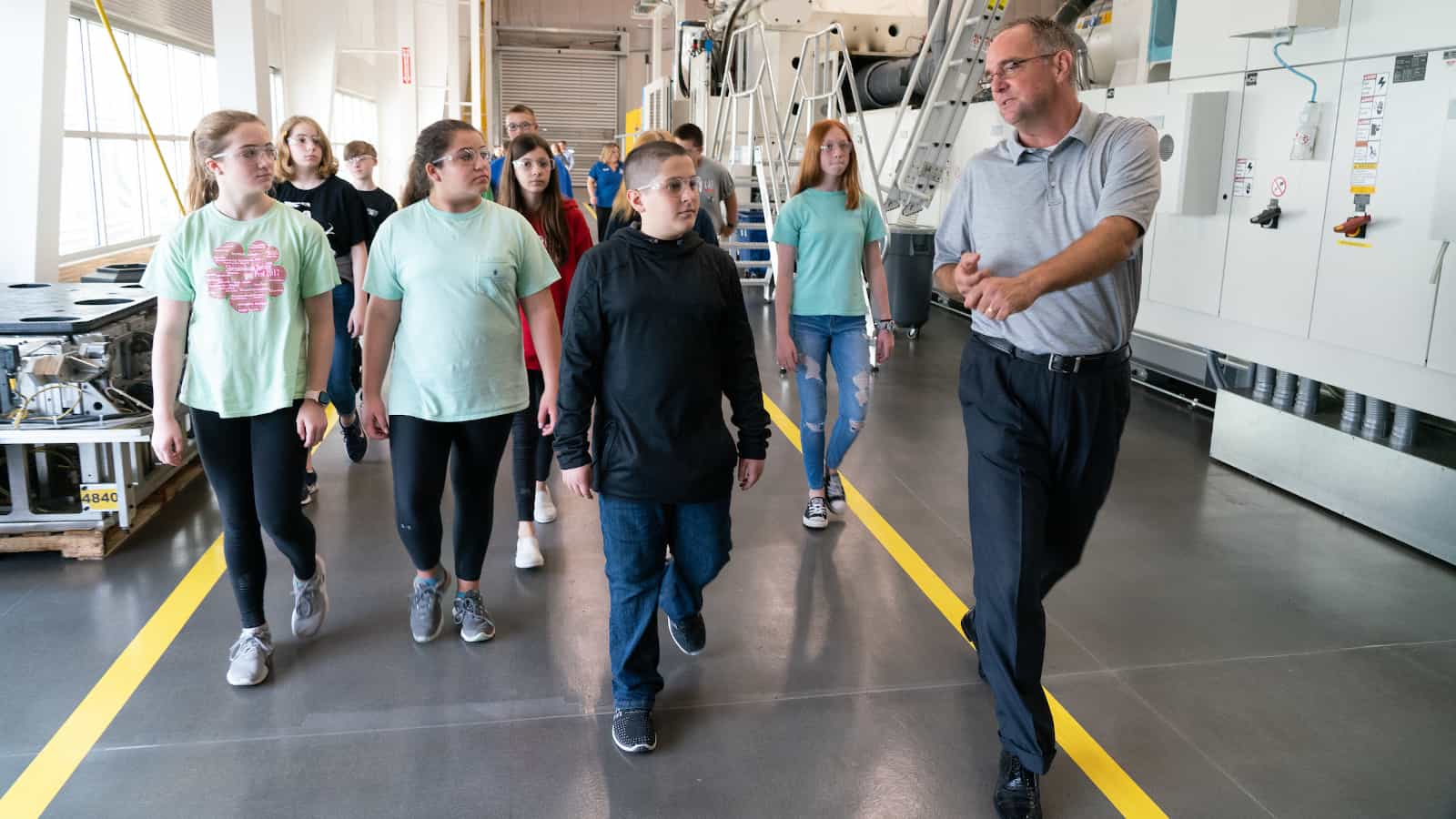
This year’s biggest celebration of manufacturing is coming up soon in October—and manufacturers who want to take part should start planning now.
On MFG Day—Friday, Oct. 6—and throughout the rest of the month, manufacturing companies, community colleges and associations will have their best opportunity to show young people all the industry has to offer them, via factory visits, career fairs and more. So how can companies make the most of it?
Recently, the Manufacturing Institute—the NAM’s 501(c)3 nonprofit workforce development and education affiliate—hosted a webinar to share tips, insights and resources for companies interested in putting on their own MFG Day events.
The participants: The webinar, titled “Making the Most of Your Event,” was hosted by MI Director of Student Engagement Jen White. It included presentations and insights from GenMet Corporation CEO Eric Isbister and American Honda Motor Co. Assistant Manager of Government and Industry Relations Meredith Reffey.
Find your event: Manufacturers can engage in a range of different kinds of events—from career fairs to school visits to challenges and competitions.
- The most common MFG Day event is a facility tour or open house, which allows students, educators and parents to see firsthand the work that manufacturers do every day.
- But whether a manufacturer opens their doors for a tour or designs a “Parents’ Night” for family members, the most important thing is to find an authentic way to connect with community members, the panelists recommended.
- “If you are reaching students and educators, parents, even community members, then you’re … growing awareness of manufacturing and hopefully exciting folks about potentially working in the industry,” said White.
Show yourself: According to Isbister, the first priority of an MFG Day event should simply be to present careers in manufacturing as a viable option for community members.
- “We’ve had over 3,000 students tour here, and our goal … is to let them know that manufacturing exists,” said Isbister. “Most of them don’t, most parents don’t. Most teachers and guidance counselors and school board members don’t have the faintest idea of what we do. And when they walk in the building, their jaws hit the ground, and they’re excited to see things.”
Expand the circle: While engaging students is important, companies should be sure to invite others in the community as well, Isbister said.
- “Don’t just invite students [to your event], but teachers and guidance counselors and administrative people and school board members,” said Isbister. “If you get a student, you got one. If you get a teacher, you got 24. If you get a school board member, you’ve got the person with the pen who can authorize things—and that’s important, too.”
Know your audience: According to Reffey, it’s critical to meet audiences where they are.
- One of the most important lessons Honda has learned from past events is that high school audiences respond well to hands-on activities—particularly those that have an element of competition. By offering activities that the audience enjoys, manufacturers can amp up excitement and promote more engagement.
- “High school students can act very ‘too cool’—but if you set things up as a competition, they break out of their shells,” said Reffey. “Put a racing simulator in front of ’em, they seem to come unglued. They get so excited to participate.”
Get involved: The MI has a range of resources designed to help manufacturers create effective events—and White emphasized that those resources are open and available to all manufacturers interested in using them.
- “Being involved with MFG Day, hosting events, using the branding that’s available on the website, registering your events on MFGday.com and all of our resources and toolkits are 100% free to you,” said White. “You do not have to be an MFG Day sponsor. You do not have to be an NAM member. It is 100% free for you to use. We want as many companies and partners of manufacturers involved in MFG Day as possible.”
Learn more: Manufacturers are encouraged to reach out with any questions to [email protected].
Future Creators: Transportation Central Advances Industry Awareness
As part of Careers on Track, the MI and Union Pacific Railroad partnered with Everfi® to create and launch the Transportation Central module on Future Creators (Endeavor) – a digital education program giving middle and high-school students an opportunity to explore STEM careers. Using interactive gameplay, students explore a variety of professions, encounter real-world scenarios and learn new ways to solve common problems while interfacing with diverse employees along the way.
Transportation Central is an immersive simulation focused on careers in transportation, distribution and logistics (TDL). Other modules explore concepts in advanced manufacturing, data driven decision making and more. Read about how the MI and Union Pacific Railroad are leading the way to raise awareness and inspire students to pursue careers in manufacturing and TDL in the Transportation Central Case Study.
Unlimited access to Future Creators (Endeavor) is provided at no cost to select schools thanks to Union Pacific’s support. Contact Jen White, the MI’s Director of Student Engagement, to learn how you can help the MI provide Future Creators (Endeavor) to more students in schools across the U.S.
New MI Report: Manufacturers Make Strides in Addressing DE&I Priorities
Since the MI’s inaugural DEI benchmarking survey, conducted in partnership with Keybridge and released in October 2021, manufacturers have taken active steps to improve DEI in the workplace. The MI has recently surveyed manufacturers again to highlight current practices and attitudes around DEI in our new DEI Benchmarking in Manufacturing Report. Our updated survey lays out how manufacturing employers are approaching their companies’ initiatives in new ways. The report provides helpful information on the state of DEI in the manufacturing industry and recommendations for employers to use as they improve on progress made over the last two years. Check it out here.
KEY TAKEAWAYS:
- 72% of manufacturers agreed that improving and maintaining DEI was a key focus for their company – and many of them have been taking tangible steps towards that goal.
- More than 60% of respondents reported that the representation of women within their companies has increased in the past 5 years.
Manufacturers Make Progress on DE&I

Diversity, equity and inclusion efforts have a lot of payoffs: they widen talent pipelines, increase retention rates and improve business outcomes. So what are manufacturers doing to strengthen DE&I in their workplaces? A newly updated survey from the MI and Keybridge has the answers.
What it is: The MI and Keybridge conducted their inaugural DE&I benchmarking survey in October 2021, and manufacturers’ DE&I efforts have grown a lot since then. One year later, the MI and Keybridge repeated the survey, and the results are in—along with recommendations for manufacturers seeking to grow further.
A firm commitment: 72% of manufacturers agreed that improving and maintaining DE&I was a key focus for their company in 2022—and many of them have been taking tangible steps toward that goal.
- Of the 60% of companies that made public statements affirming their commitment to DE&I, most have followed through with diversity commitments, employee resource groups, donations and transparent updates on their DE&I progress.
Widening talent pools: More than 60% of respondents reported that the representation of women within their companies has increased in the past five years. Still, there were also some challenges in expanding the diversity of hiring pools.
- 50% of companies reported struggling with hiring diverse candidates, with 40% struggling with retaining diverse workers.
Where to start: Companies that have not yet taken concrete actions toward fulfilling their commitments can get started by developing a strategic plan or designating a senior leadership position for DE&I issues, the report recommended.
- Another useful tactic is setting up feedback mechanisms for employees, so the company can track its progress on DE&I.
More recommendations: For those further along, the report suggests other moves, including:
- Expand recruitment pipelines by partnering with community organizations, community colleges and technical schools to tap into more diverse pipelines.
- Update position descriptions with language that widens and diversifies the applicant pool.
- Review hiring practices to minimize bias, such as by including blinded resume reviews, standardizing interview questions and employing skills tests and panel interviews.
- Standardize the promotion processes by using the same scoring system and criteria for all employees, seeking input from multiple sources and highlighting clear career pathways.
- Standardize work assignment systems by cross-training workers, to ensure that no one employee is stuck in an undesirable role for too long.
The last word: “The labor market is historically tight, and we know the number one issue for manufacturers is workforce,” said NAM Chief Economist and Manufacturing Institute Center for Manufacturing Research Director Chad Moutray. “Focusing on DE&I is a great way to widen the net and retain the employees that you have.”
